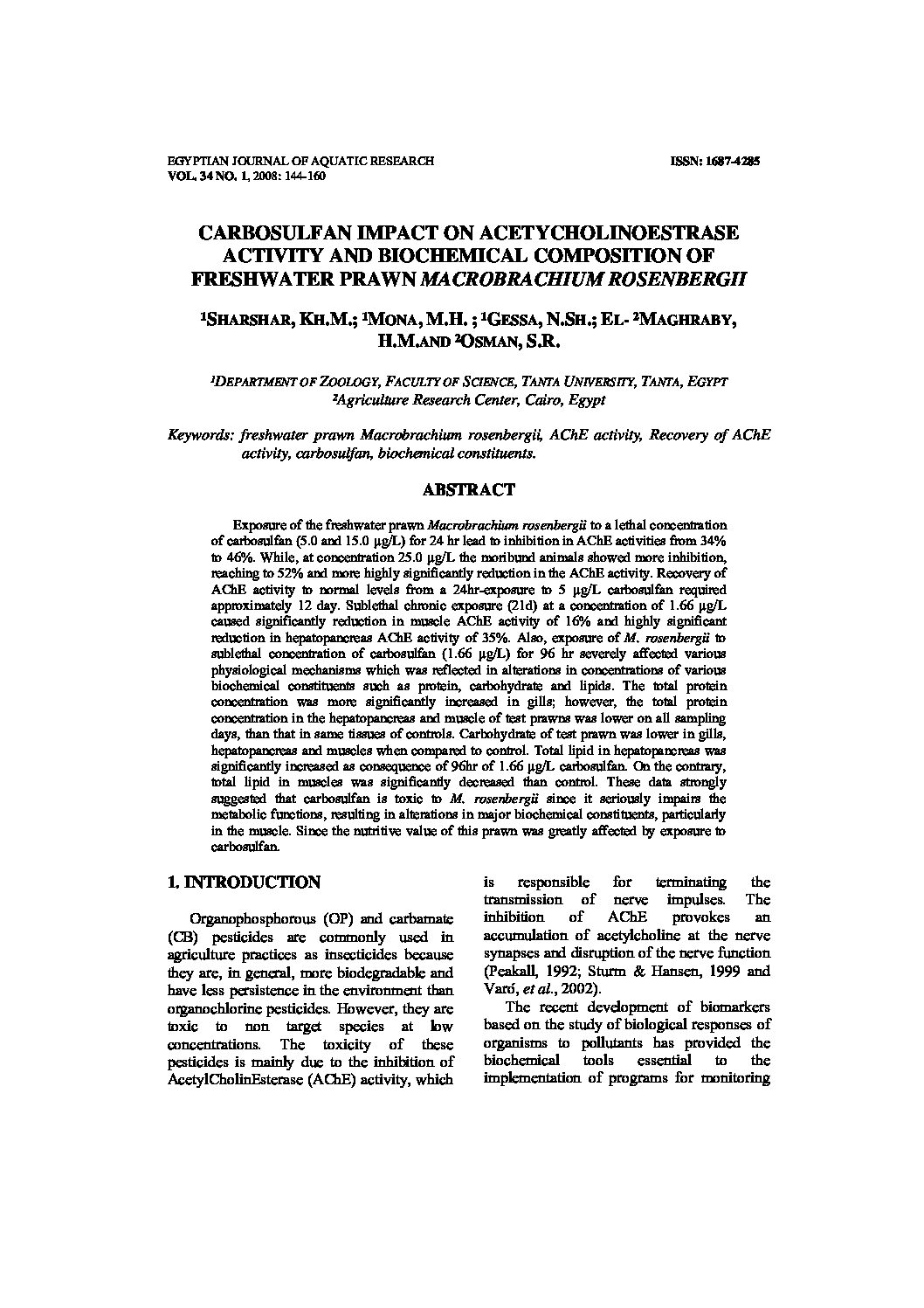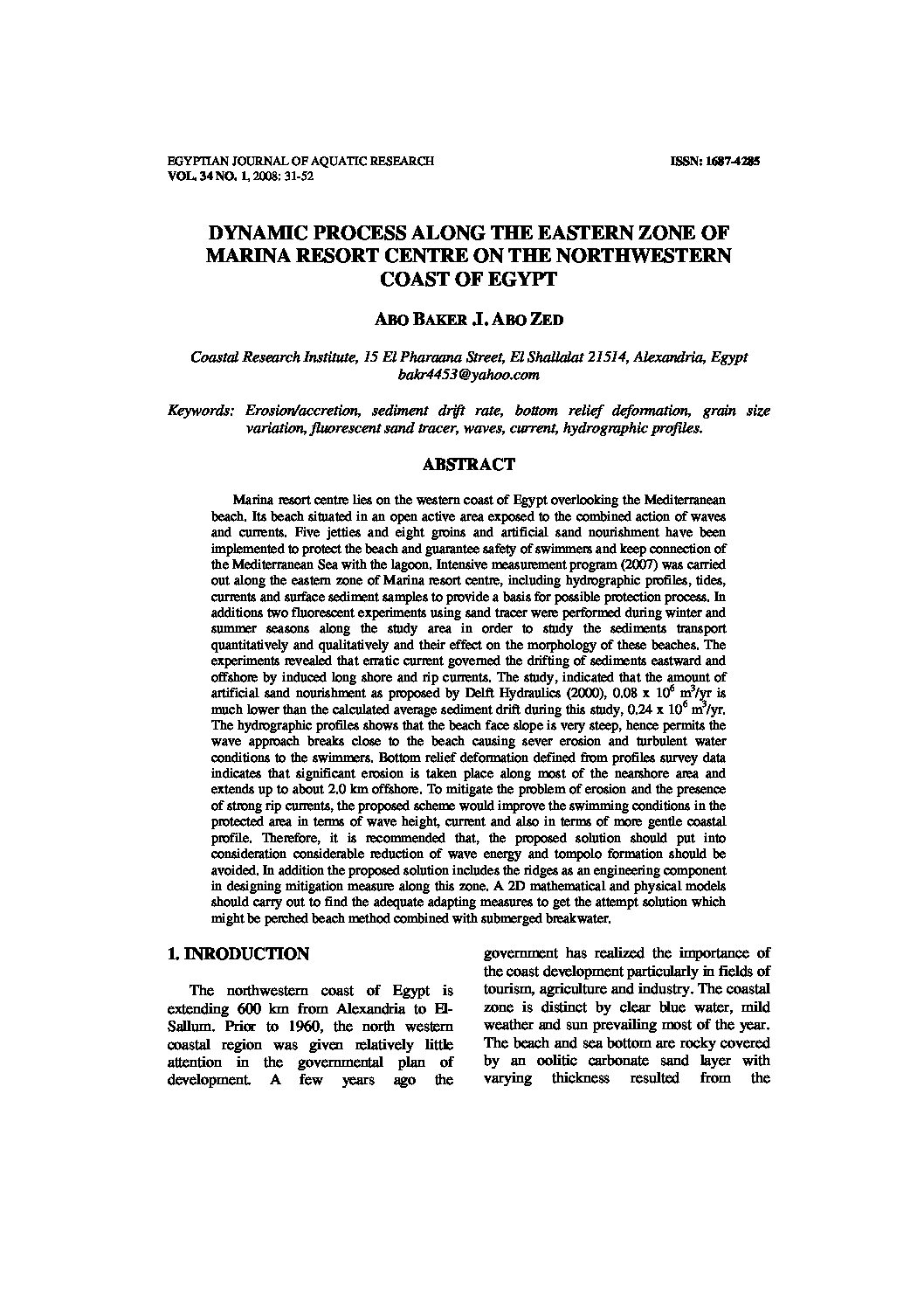Categories
vol-34HEALTH STATUS OF OREOCHROMIS NILOTICUS IN FISH
FARM IRRIGATED WITH DRAINAGE WATER IN EL FAYOUM
PROVINCE, EGYPT
AMAL M. YACOUB; SOAD A. MAHMOUD AND SAFAA I. TAYEL
National Institute of Oceanography and Fisheries, Fish Research Station- El Kanater El
Khairya, Cairo, Egypt.
[email protected]
ABSRTACT
Fish samples of Oreochromis niloticus (L.) were caught during year 2006 from a fish
farm in El Fayoum Province for monitoring bioaccumulation of some heavy metals (Fe,
Mn, Cu, Zn, Pb and Cd) in the liver, intestine, gills and muscles of the fish and their effect
on the tissue organs. The results revealed that the concentrations of zinc and lead were
higher than the permissible limit according to Food and Drug Administration (FDA) in the
liver, intestine, gills and muscles of O. niloticus. The concentrations of copper and
cadmium were higher than the permissible limit in the liver for copper and in the liver and
intestine for cadmium. Several histopathological changes were observed in the liver, gills,
intestine and muscles of the fish. The liver sections exhibited degeneration and necrosis of
hepatocytes. The hepatic tissue was occupied with necrotic areas and ballooning
degeneration. Microscopical examination of the fish gills showed edema in primary and
secondary lamellae, complete fusion of secondary lamellae and telangiectasis (congestion
with blood cells in the tips of secondary lamellae). The fish gills also suffered from severe
hemorrhage. The hisopathological changes in the intestine included degeneration and
necrosis of epithelial cells of mucosa, aggregation of inflammatory cells in submucosa and
destruction of muscularis. Skeletal muscles exhibited different stages of degeneration,
atrophy, necrosis and infiltration of inflammatory cells.







